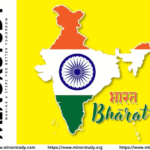🇮🇳 7 Powerful Reasons Why National Flag Adoption Day Sparks Pride and Unity in Every Indian Heart
Every flutter of the Indian tricolour tells a story — a tale of struggle, vision, pride, and unity. On 22nd July, India observes National Flag Adoption Day, a day that might not be as widely celebrated as Independence Day, but holds monumental significance in shaping the identity of our nation. It was on 22 July 1947, a few weeks before India gained independence, that the Constituent Assembly of India officially adopted the Tricolour as the National Flag.
- 📜 History of National Flag Adoption Day
- 🧠 Fascinating Facts About National Flag Adoption Day
- 📅 Timeline of the Indian National Flag
- 🌈 Symbolism & Significance of the Tricolour
- 💬 Frequently Asked Questions (FAQs)
- Q1: Why is National Flag Adoption Day important?
- Q2: Who designed the current Indian flag?
- Q3: Is National Flag Adoption Day a public holiday?
- Q4: What does the Ashoka Chakra stand for?
- Q5: Where is the largest Indian flag hoisted?
- 🪁 Observance of National Flag Adoption Day
- ✨ 7 Key Reasons Why This Day Matters in Daily Life
- 🙏 Wishing on National Flag Adoption Day 🇮🇳
- 🎯 Importance in Today’s Society
- ✅ Conclusion: Why This Day Is More Than a Page in History
In this detailed, human-friendly article, we will journey through:
The history of the Indian flag,
Facts, FAQs, and a timeline of events,
Its symbolic significance in our lives and society,
Observance customs, and
A conclusion reflecting on its daily life impact.
Let’s raise our hearts in honour of the Tiranga, and explore why this day is emotionally powerful for every Indian.

📜 History of National Flag Adoption Day
On 22 July 1947, the Constituent Assembly of India adopted the current design of the national flag.
The flag was first hoisted officially on 15 August 1947 when India became independent.
Pingali Venkayya, a freedom fighter and a Gandhian from Andhra Pradesh, designed the base idea of the flag.
It underwent several iterations before the final one — a horizontal tricolour of saffron, white, and green with the Ashoka Chakra in navy blue — was accepted.
Pre-Independence Flag Variants:
| Year | Description |
|---|---|
| 1906 | First unofficial flag with green, yellow, and red stripes |
| 1921 | Flag proposed by Pingali Venkayya, with spinning wheel at the center |
| 1931 | A tricolour with Gandhian ideals, later evolved into current format |
| 1947 | Ashoka Chakra replaced the charkha, becoming the flag of free India |
🧠 Fascinating Facts About National Flag Adoption Day
The Ashoka Chakra has 24 spokes, symbolizing constant progress and the cycle of time.
The flag must always be hoisted with the saffron band on top.
The Indian flag is made only at the Karnataka Khadi Gramodyoga Samyukta Sangha (KKGSS) — the only authorized manufacturer.
Dr. Rajendra Prasad, the first President of India, announced the adoption of the Tricolour before the Assembly.
The day represents the first symbol of India’s sovereign identity, even before formal independence.
📅 Timeline of the Indian National Flag
| Date | Event |
|---|---|
| 1906 | First unofficial flag hoisted in Kolkata |
| 1917 | Annie Besant’s Home Rule League flag introduced |
| 1921 | Pingali Venkayya presents design to Gandhi |
| 1931 | Tricolour adopted with spinning wheel |
| 22 July 1947 | Final tricolour with Ashoka Chakra adopted |
| 15 August 1947 | First official hoisting as National Flag of India |
🌈 Symbolism & Significance of the Tricolour
Each colour of the national flag is not just symbolic — it’s deeply spiritually and culturally rooted:
Saffron (Top Band): Symbolizes courage and sacrifice. It reminds citizens of the sacrifices made during the freedom struggle.
White (Middle Band): Denotes peace, honesty, and truth.
Green (Bottom Band): Represents fertility, prosperity, and the land of India.
Ashoka Chakra: Signifies the eternal wheel of law, progress, and dharma.
“A flag is not just cloth. It’s the embodiment of a nation’s soul.”
💬 Frequently Asked Questions (FAQs)
Q1: Why is National Flag Adoption Day important?
Because it marks the official acceptance of India’s most significant national symbol — the Tricolour.
Q2: Who designed the current Indian flag?
Pingali Venkayya, a freedom fighter from Andhra Pradesh, conceptualized the flag that was later modified.
Q3: Is National Flag Adoption Day a public holiday?
No, it is not a public holiday, but many institutions observe it through educational and cultural events.
Q4: What does the Ashoka Chakra stand for?
It represents the wheel of law, movement, and righteousness, inspired by the Lion Capital of Ashoka.
Q5: Where is the largest Indian flag hoisted?
At the Attari–Wagah Border and the Belagavi Fort (Karnataka) — both among the largest free-flying flags.
🪁 Observance of National Flag Adoption Day
Though it is not widely celebrated like Republic Day or Independence Day, patriotic institutions, schools, and government offices conduct:
Flag hoisting ceremonies
Speech competitions on the flag’s history
Drawing contests for children
Documentary screenings about the flag’s evolution
Many people also update their social media with tricolour-themed posts, inspiring national pride digitally.
✨ 7 Key Reasons Why This Day Matters in Daily Life
It reminds us of our identity as Indians, transcending religion, caste, or region.
It instills national pride, especially in children and youth.
It teaches sacrifice, as the flag was born out of blood, struggle, and vision.
It connects generations, helping young people learn about India’s past.
It inspires civic sense, urging us to respect national symbols.
It revives forgotten heroes like Pingali Venkayya and other contributors.
It fuels patriotism in our everyday actions, from saluting the flag to voting responsibly.
🙏 Wishing on National Flag Adoption Day 🇮🇳
Let your messages this day reflect unity and national emotion:
“On National Flag Adoption Day, let’s salute the sacred Tricolour that unites 1.4 billion hearts.”
“May the Tiranga always fly high, reminding us of the strength in diversity.”
“Proud to be part of a nation that chose its identity with wisdom, unity, and peace.”
“Happy National Flag Adoption Day – where colours speak of sacrifice, truth, and hope.”
🎯 Importance in Today’s Society
In the current age of digital boundaries and global chaos, National Flag Adoption Day:
Reinforces unity in diversity — a concept India thrives upon.
Educates the youth about nationhood, dignity, and pride.
Reminds us to honour democracy, freedom, and the constitution.
Keeps alive the emotional bond with the national flag beyond symbolic use.
Serves as a subtle resistance to division and negativity, reaffirming hope.
✅ Conclusion: Why This Day Is More Than a Page in History
National Flag Adoption Day isn’t just about a flag — it’s about owning a collective identity, one that holds courage, peace, and growth in its tricoloured threads. It is a reminder that India is not a territory, but an idea — built with values, vision, and sacrifice.
So the next time you see the flag fluttering — on a school rooftop, at a soldier’s shoulder, or on a podium — pause, feel the pride, and remember 22 July 1947, the day this symbol of national unity was born.
🇮🇳 Vande Mataram. Jai Hind.








